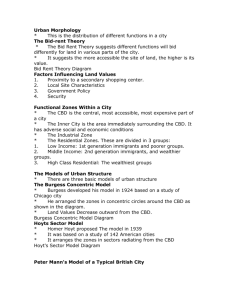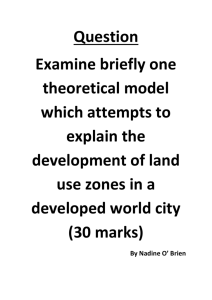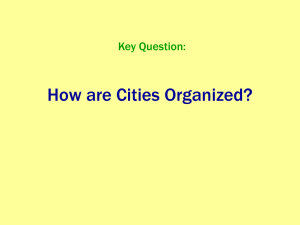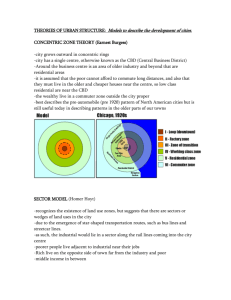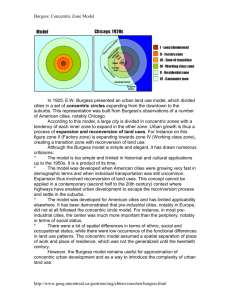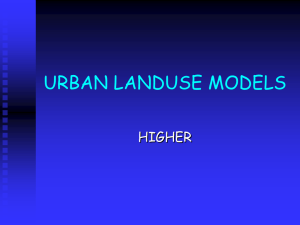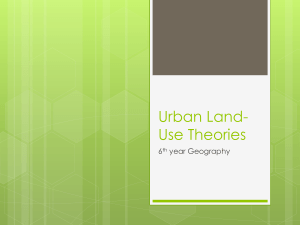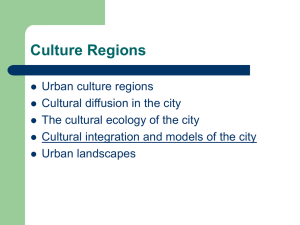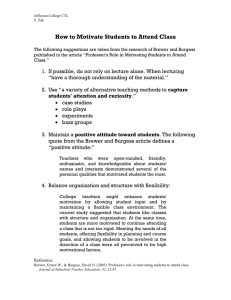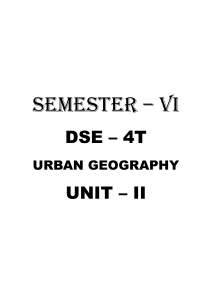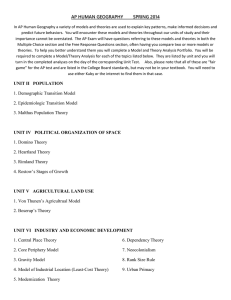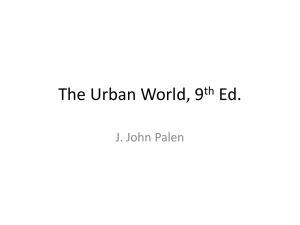Burgess' Concentric Zones Model: Urban Land Use
advertisement
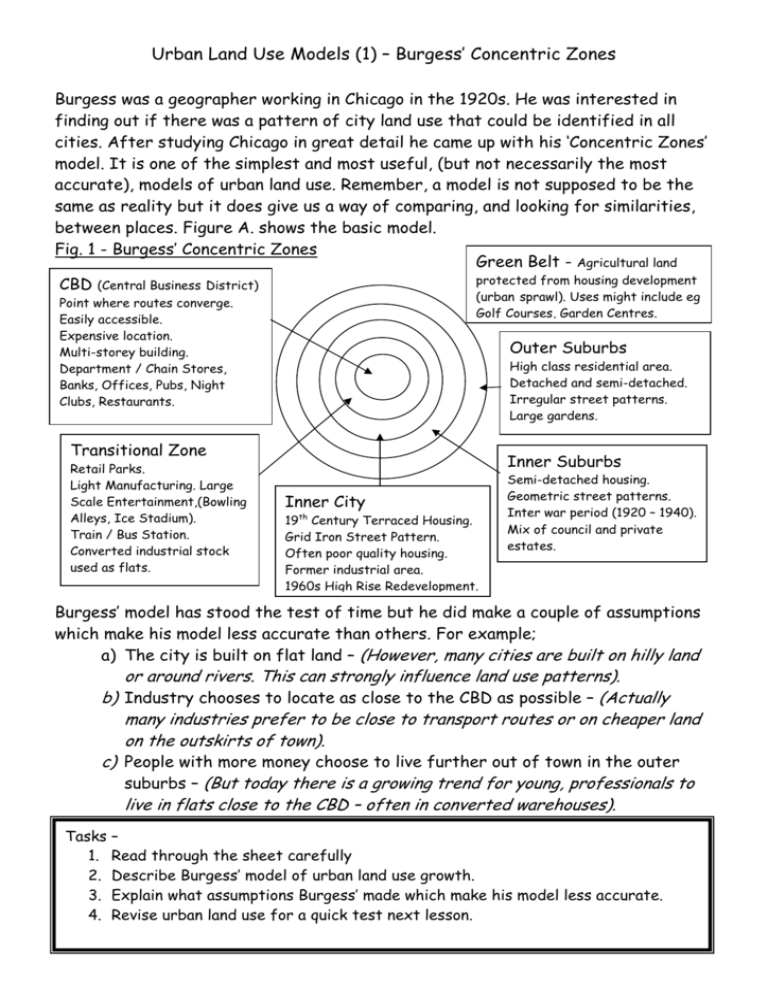
Urban Land Use Models (1) – Burgess’ Concentric Zones Burgess was a geographer working in Chicago in the 1920s. He was interested in finding out if there was a pattern of city land use that could be identified in all cities. After studying Chicago in great detail he came up with his ‘Concentric Zones’ model. It is one of the simplest and most useful, (but not necessarily the most accurate), models of urban land use. Remember, a model is not supposed to be the same as reality but it does give us a way of comparing, and looking for similarities, between places. Figure A. shows the basic model. Fig. 1 - Burgess’ Concentric Zones Green Belt - Agricultural land protected from housing development CBD (Central Business District) (urban sprawl). Uses might include eg Golf Courses, Garden Centres. Point where routes converge. Easily accessible. Expensive location. Multi-storey building. Department / Chain Stores, Banks, Offices, Pubs, Night Clubs, Restaurants. Outer Suburbs High class residential area. Detached and semi-detached. Irregular street patterns. Large gardens. Transitional Zone Retail Parks. Light Manufacturing. Large Scale Entertainment,(Bowling Alleys, Ice Stadium). Train / Bus Station. Converted industrial stock used as flats. Inner Suburbs Inner City 19th Century Terraced Housing. Grid Iron Street Pattern. Often poor quality housing. Former industrial area. 1960s High Rise Redevelopment. Semi-detached housing. Geometric street patterns. Inter war period (1920 – 1940). Mix of council and private estates. Burgess’ model has stood the test of time but he did make a couple of assumptions which make his model less accurate than others. For example; a) The city is built on flat land – (However, many cities are built on hilly land or around rivers. This can strongly influence land use patterns). b) Industry chooses to locate as close to the CBD as possible – (Actually many industries prefer to be close to transport routes or on cheaper land on the outskirts of town). c) People with more money choose to live further out of town in the outer suburbs – (But today there is a growing trend for young, professionals to live in flats close to the CBD – often in converted warehouses). Tasks – 1. Read through the sheet carefully 2. Describe Burgess’ model of urban land use growth. 3. Explain what assumptions Burgess’ made which make his model less accurate. 4. Revise urban land use for a quick test next lesson.
